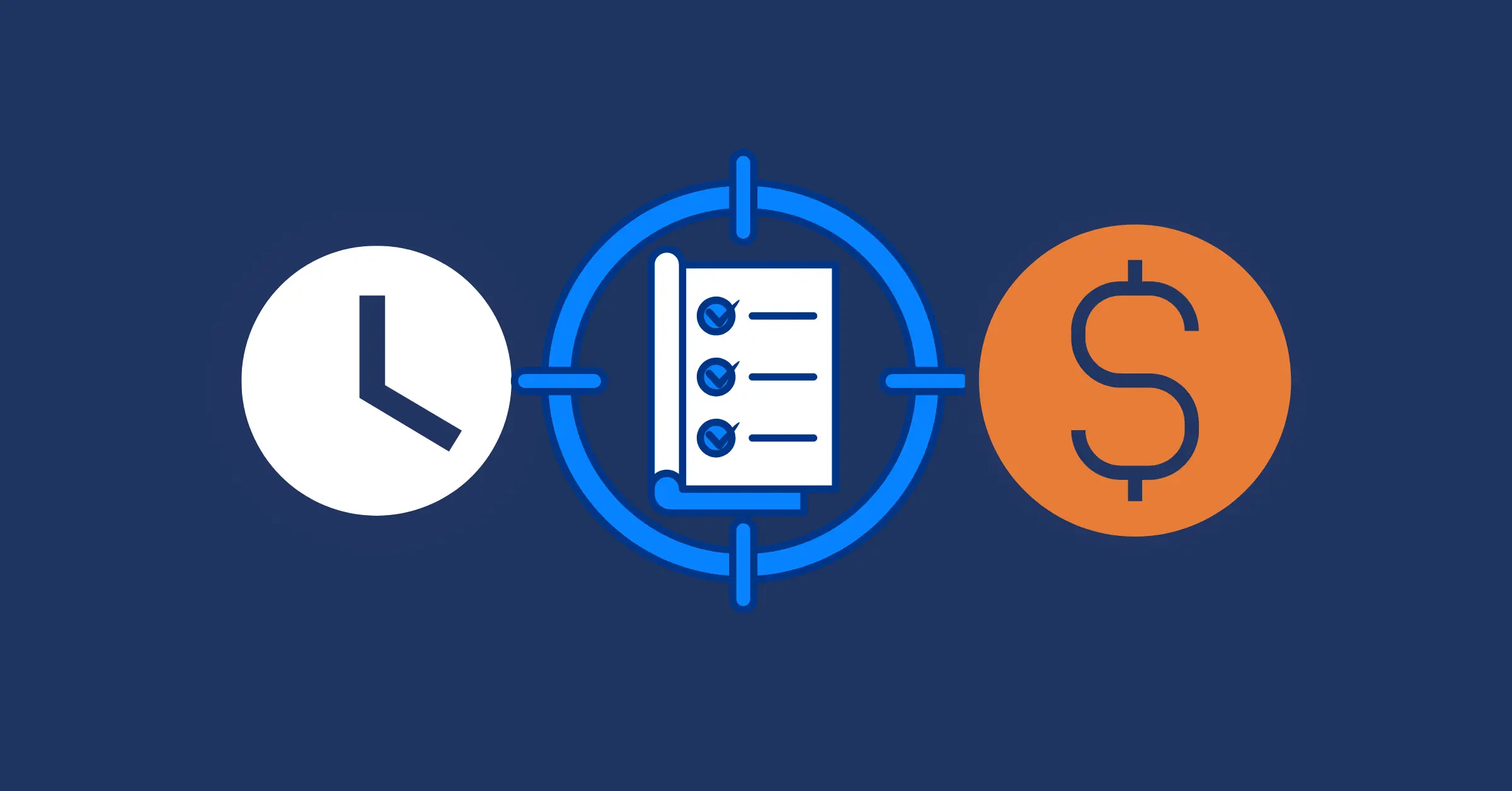Six Sigma Project Management Techniques Every Professional Should Master
Discover essential Six Sigma project management techniques to improve quality, reduce waste, and elevate your project delivery performance.
Project managers are always looking for ways to deliver consistent results, reduce rework, and maintain quality across complex projects. Six Sigma project management techniques provide a structured, data-driven approach to achieve those goals. By applying proven tools such as DMAIC, DMADV, and Lean Six Sigma, teams can identify inefficiencies, remove process variation, and build a culture of continuous improvement.
Unlike general project management practices, Six Sigma focuses on measurable outcomes and root-cause analysis. It equips professionals with methods to analyze performance, improve predictability, and control quality throughout a project’s life cycle. Understanding and mastering these techniques can help project managers deliver higher value with fewer defects and greater stakeholder satisfaction.
This guide explores the core Six Sigma project management techniques every professional should know, and explains how to integrate them into your existing methodology for lasting performance improvement.
The Basics of Six Sigma Methodology
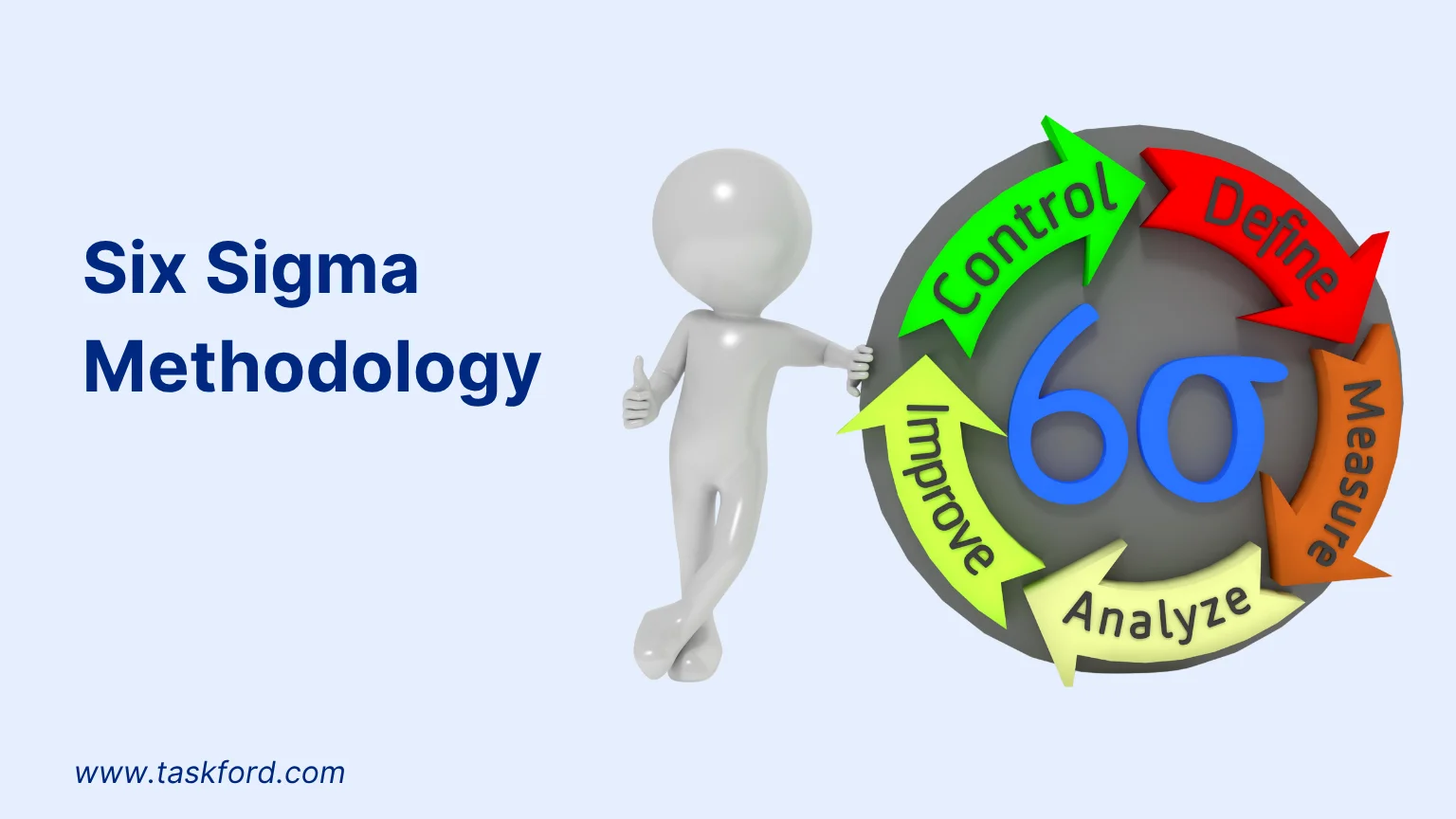
Six Sigma is a structured methodology designed to reduce process variation and achieve near-perfect quality. Its goal is to limit defects to no more than 3.4 errors per million opportunities, ensuring consistent and predictable results. This approach relies heavily on data and statistical analysis rather than assumptions, helping organizations base decisions on evidence instead of intuition.
To guide practitioners through skill development and expertise,Six Sigma uses a belt certification hierarchy similar to martial arts.
- Yellow Belt holders understand basic concepts and support improvement initiatives.
- Green Belts lead smaller projects and analyze data under guidance from senior experts.
- Black Belts manage cross-functional improvement projects and mentor Green Belts.
- Master Black Belts develop strategy, oversee training programs, and drive Six Sigma deployment at the organizational level.
At its core, Six Sigma is built on several key principles:
- Customer Focus: Every improvement starts with understanding what customers truly value.
- Data-Driven Decision-Making: Processes are measured, analyzed, and improved using factual data.
- Process Orientation: The goal is to optimize the process itself, not just fix outcomes.
- Proactive Improvement: Prevent issues before they occur through predictive analysis.
- Team Collaboration: Cross-functional teams drive sustainable results through shared accountability.
What is Six Sigma in Project Management
Six Sigma in project management is a structured approach that helps teams improve quality, eliminate inefficiencies, and deliver consistent project outcomes. It uses statistical analysis and data-driven techniques to identify the causes of defects or delays and remove them systematically. While traditional project management focuses on scope, schedule, and cost, Six Sigma emphasizes process improvement and quality control at every stage of the project life cycle.
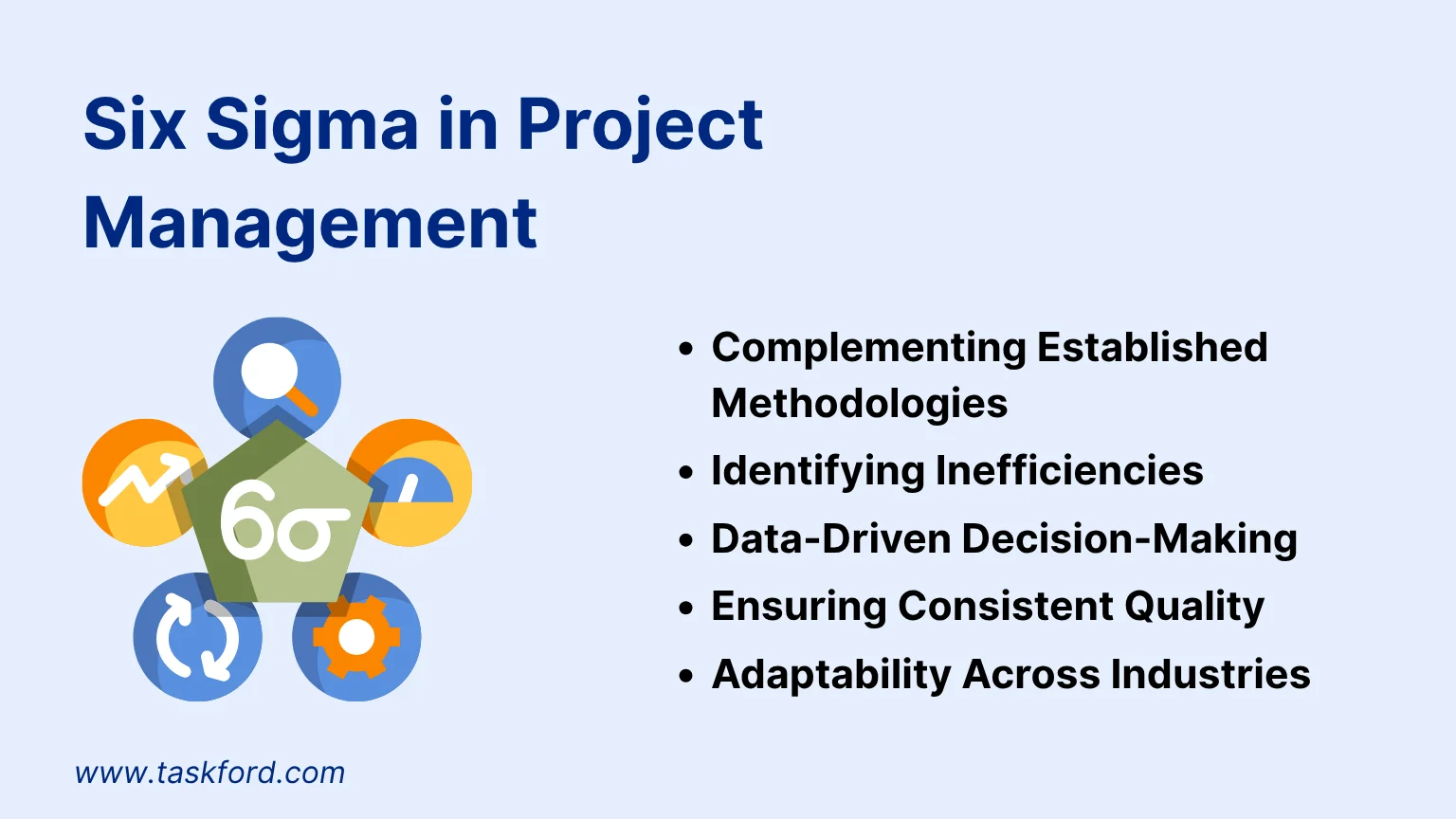
The Role of Six Sigma in Project Management
Six Sigma project management techniques complement established methodologies such as Agile, Waterfall, and PMI frameworks. While Agile focuses on adaptability and rapid delivery, and PMI emphasizes structure and governance, Six Sigma adds a layer of data-driven process improvement. It strengthens existing frameworks by identifying inefficiencies, validating changes through measurable data, and maintaining control over process outcomes.
Six Sigma’s role is to help project managers improve process efficiency, apply data analysis for decision-making, and achieve quantifiable results. This ensures that projects are not only completed on time and within scope but also deliver consistent quality and reduced variation.
Originally developed for manufacturing, Six Sigma has evolved to support project management in industries such as IT, healthcare, finance, and construction. In these fields, it’s used to reduce error rates, streamline workflows, and enhance customer satisfaction. Its adaptability allows project managers to use statistical thinking and continuous improvement techniques across any project type, regardless of complexity or scale.
By understanding the role of Six Sigma in project management, professionals can transform how they plan and execute work, turning traditional project management into a system of continuous, measurable improvement.
Core Six Sigma Project Management Techniques to Master
Mastering Six Sigma project management techniques starts with understanding its two primary frameworks, DMAIC and DMADV. These structured approaches provide the foundation for process improvement and project optimization. Beyond these, Six Sigma incorporates a set of supporting tools and concepts such as Lean, Kaizen, RCA, and SPC, which help project managers analyze data, identify waste, and maintain long-term quality control.
1. The DMAIC Framework
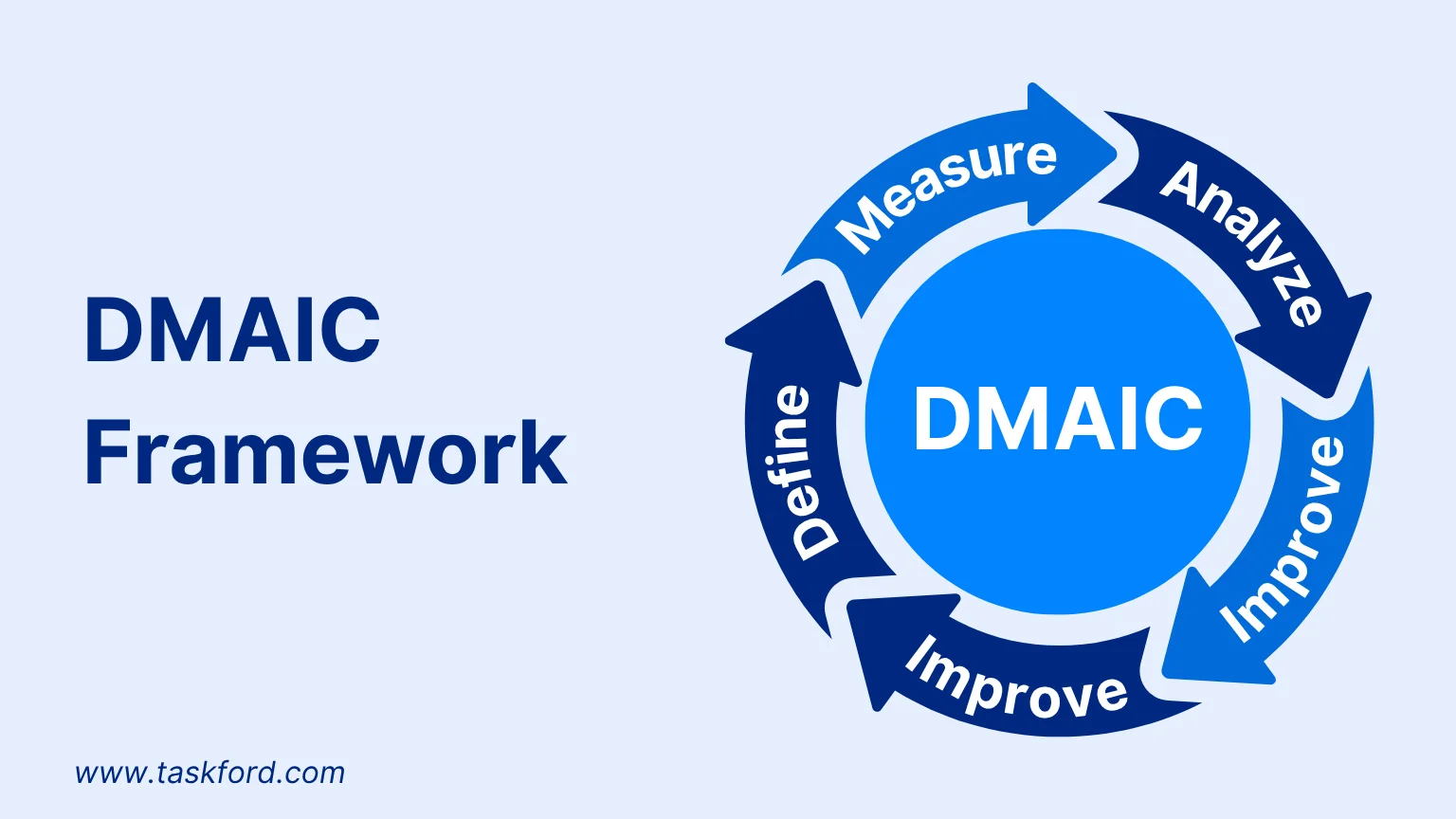
The DMAIC framework—Define, Measure, Analyze, Improve, Control—is the backbone of Six Sigma improvement projects. It is designed to enhance existing processes by identifying inefficiencies, eliminating defects, and improving overall performance.
- Define: Clearly state the project goal, customer requirements, and scope of improvement.
- Measure: Collect data to understand current performance levels and identify variation.
- Analyze: Examine the data to uncover root causes of inefficiencies or defects.
- Improve: Implement solutions that address the identified root causes and optimize process flow.
- Control: Establish monitoring systems to ensure the new process remains stable and effective over time.
Imagine a project team facing recurring schedule delays. Using the DMAIC approach, they first define the issue, measure task completion rates, analyze the cause (for instance, unclear dependencies), implement improvements (such as better resource allocation), and finally control results through weekly progress tracking.
DMAIC is one of the most powerful Six Sigma project management techniques because it refines and stabilizes existing workflows. By applying data-driven analysis, it ensures continuous efficiency and predictable project outcomes.
2. The DMADV Framework
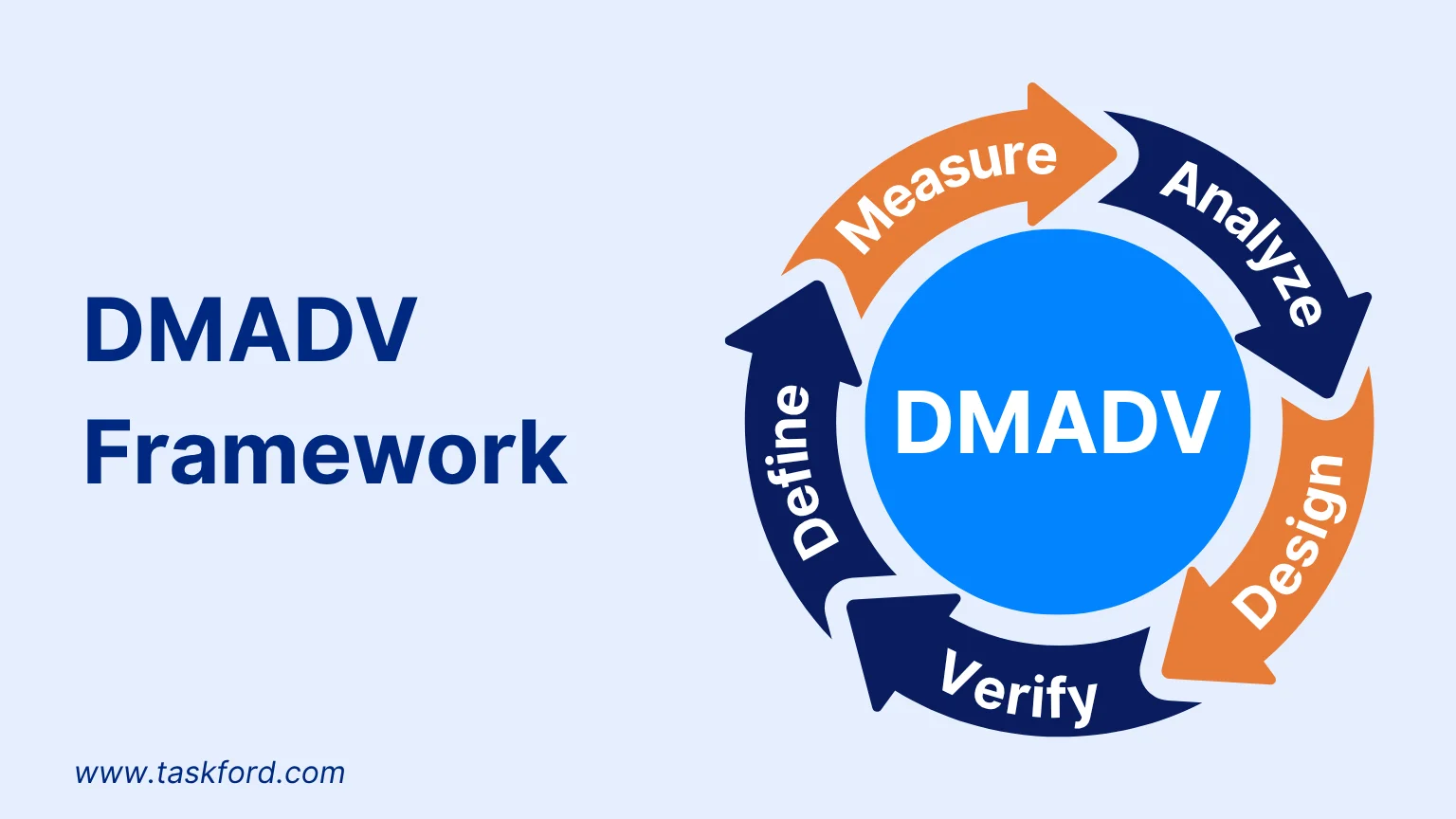
The DMADV framework—Define, Measure, Analyze, Design, Verify—is used when a project involves creating new processes, products, or services rather than improving current ones. It ensures that new initiatives are designed to meet customer expectations and quality standards from the start.
- Define: Establish design goals aligned with customer needs and business objectives.
- Measure: Identify key quality metrics and gather relevant data to inform design decisions.
- Analyze: Evaluate different design options and assess potential risks or limitations.
- Design: Develop a detailed process or product design that meets performance requirements.
- Verify: Test and validate the design through pilot runs or simulations to confirm effectiveness.
For example, a project team developing a new software platform can use DMADV to ensure user needs, performance benchmarks, and security standards are integrated into the design before deployment.
DMAIC vs. DMADV — Optimization vs. Innovation:
- DMAIC focuses on improving and stabilizing existing processes.
- DMADV focuses on innovating and designing new ones.
Together, they provide a complete framework for project optimization and innovation within Six Sigma.
Other Techniques and Concepts
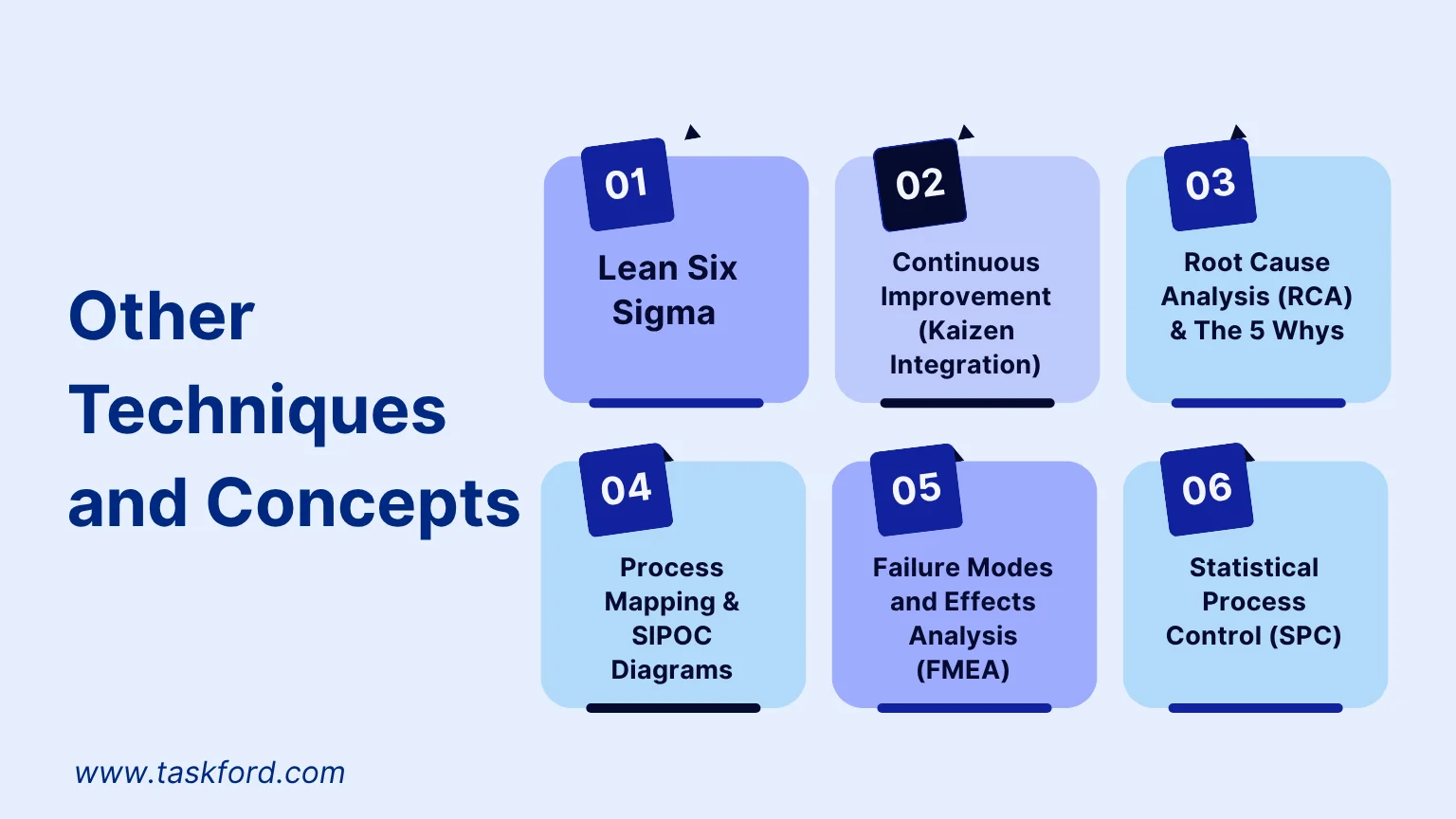
While DMAIC and DMADV form the core, Six Sigma also relies on several supporting methodologies and tools that help teams manage complexity and sustain improvements.
1. Lean Six Sigma
Lean Six Sigma combines the waste-reduction focus of Lean with the defect-reduction focus of Six Sigma. It emphasizes delivering maximum value to the customer with minimal waste. Project managers use Lean Six Sigma to streamline workflows, reduce lead times, and enhance productivity.
Common tools include Value Stream Mapping (VSM), 5S, and Kanban, which help visualize inefficiencies and drive faster delivery cycles.
2. Continuous Improvement (Kaizen Integration)
Kaizen, meaning “change for the better,” is a philosophy of ongoing, incremental improvement. When integrated with Six Sigma, Kaizen ensures that process optimization doesn’t stop once a project closes. Teams continually assess performance, collect feedback, and refine operations.
This mindset promotes accountability, encourages collaboration, and supports a long-term culture of excellence.
3. Root Cause Analysis (RCA) & The 5 Whys
Root Cause Analysis (RCA) helps project managers dig deeper into performance issues to find their true causes rather than just addressing surface-level symptoms. A simple yet effective tool is the 5 Whys method, asking “why” repeatedly until the underlying issue becomes clear.
For example, if a project deliverable was delayed, asking “why” may reveal deeper causes such as unclear communication, inadequate resource planning, or process bottlenecks.
4. Process Mapping & SIPOC Diagrams
Process Mapping visually outlines the flow of a process to identify redundancies, handoff delays, and inefficiencies. A SIPOC diagram (Suppliers, Inputs, Process, Outputs, Customers) provides a high-level view of a process, helping teams define boundaries and responsibilities.
For project managers, these tools clarify expectations, align stakeholders, and support the Define and Measure stages of Six Sigma projects.
5. Failure Modes and Effects Analysis (FMEA)
FMEA is a risk assessment technique used to anticipate potential failures in a process or product and prioritize them based on severity, likelihood, and detectability. By identifying high-risk areas early, teams can design preventive measures before issues escalate.
In project management, FMEA is especially valuable for complex initiatives where errors can have major downstream effects on cost, quality, or safety.
6. Statistical Process Control (SPC)
Statistical Process Control (SPC) uses statistical tools to monitor and control process variation. Through control charts and process capability analysis, SPC helps project managers detect when performance deviates from acceptable limits.
Applying SPC ensures that improvements made through Six Sigma remain stable, measurable, and repeatable across multiple project cycles.
Integrating Six Sigma Techniques into Your Existing Project Management Methodology
One of the greatest advantages of Six Sigma techniques is their flexibility. They are not limited to one specific framework but can be embedded within Agile, PMI/Waterfall, or hybrid project management models to strengthen quality control and decision-making. Integrating Six Sigma principles allows teams to maintain their preferred structure while enhancing process efficiency, reducing rework, and improving project outcomes.
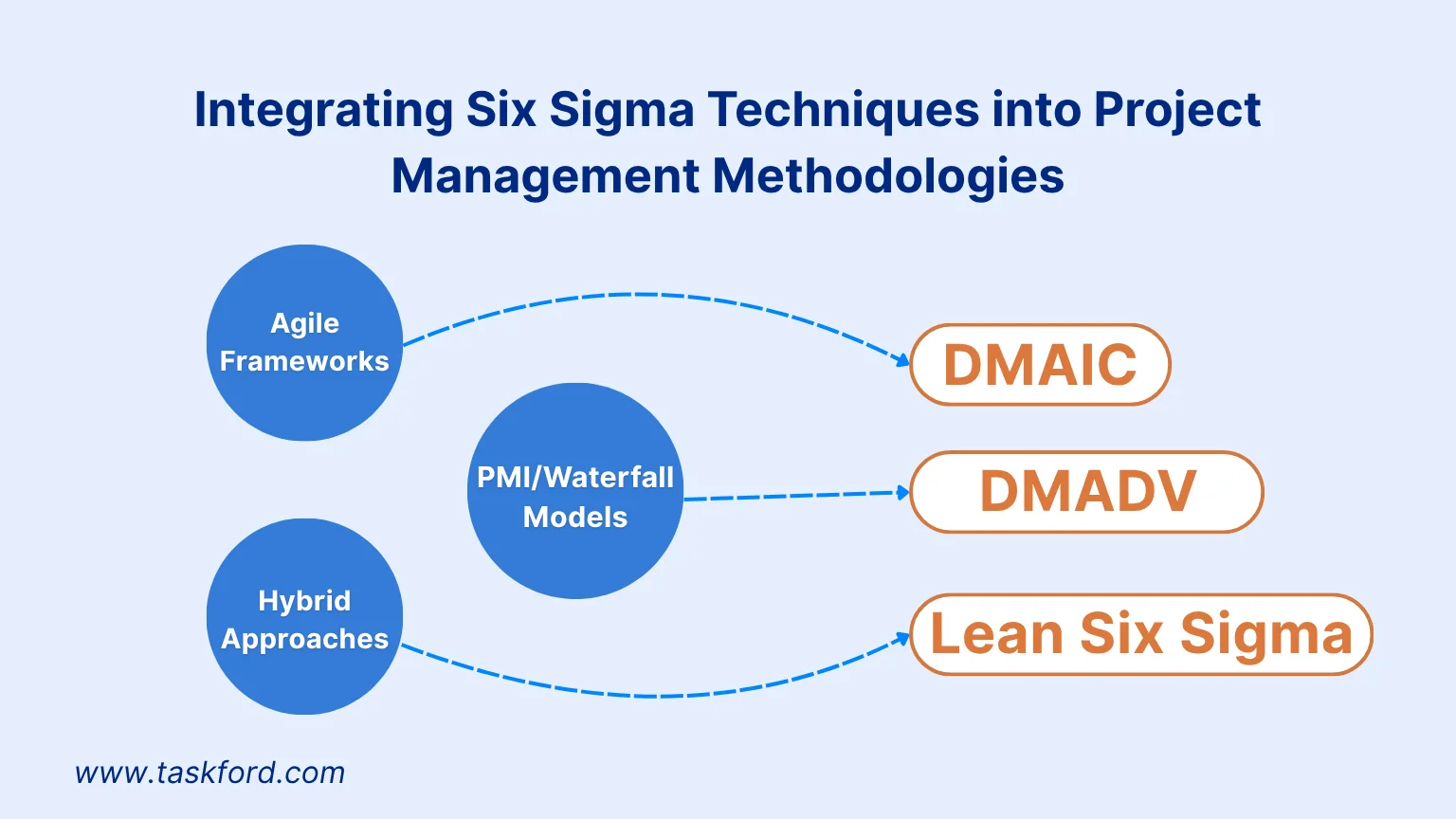
Agile Frameworks
Agile Project Management focuses on rapid delivery and adaptability, but recurring issues in sprints, such as inconsistent velocity or bottlenecks, can hinder performance. This is where DMAIC becomes valuable.
During sprint retrospectives, project teams can use DMAIC to identify and correct recurring inefficiencies:
- Define: Determine the specific issue affecting team performance (e.g., incomplete backlog items).
- Measure: Gather sprint data such as story points completed versus planned.
- Analyze: Look for root causes behind delays or quality issues.
- Improve: Adjust sprint planning, team allocation, or process steps based on findings.
- Control: Implement new metrics or dashboards to monitor future sprint consistency.
By embedding DMAIC into Agile ceremonies, teams can achieve continuous improvement without disrupting the iterative nature of Agile delivery.
PMI/Waterfall Models
Traditional PMI or Waterfall methodologies often emphasize planning and documentation. However, they can benefit from DMADV, especially when designing new project frameworks or workflows.
Project managers can use DMADV to ensure that every phase of a new framework — initiation, planning, execution, and closure — is optimized for quality and efficiency.
For example, a PMO implementing a new risk management process could apply DMADV to define objectives, measure stakeholder needs, analyze best practices, design standardized templates, and verify their effectiveness through pilot projects.
Integrating DMADV within PMI structures ensures that processes are not only well-documented but also validated through data-driven analysis before full-scale implementation.
Hybrid Approaches
Many organizations adopt hybrid methodologies that merge the adaptability of Agile with the structure of PMI or Waterfall. In these environments, Lean Six Sigma tools help balance flexibility with control.
Lean principles such as Value Stream Mapping (VSM) and waste elimination can be applied alongside PMI’s phase gates to ensure each stage adds measurable value. This combination allows teams to streamline resource use while maintaining governance, documentation, and risk management discipline.
Example: A hybrid project team can use Lean Six Sigma to shorten approval cycles, reduce redundant reporting, and ensure that project deliverables directly contribute to stakeholder goals.
Conclusion
Mastering Six Sigma project management techniques enables professionals to manage projects with greater precision, consistency, and control. By combining data analysis, process optimization, and continuous improvement, Six Sigma turns project management into a measurable system for quality and efficiency.
Frameworks such as DMAIC and DMADV, along with tools like Root Cause Analysis, FMEA, and Statistical Process Control, help project teams identify issues early, reduce variation, and maintain long-term stability. Whether working in Agile, PMI, or hybrid environments, integrating Six Sigma principles ensures that every project delivers value and meets defined performance standards.
For project managers aiming to enhance their methodology, adopting Six Sigma is not just a technical upgrade, it’s a strategic approach to building a culture of continuous improvement. By learning and applying these techniques, you can achieve consistent success, improve stakeholder confidence, and position yourself as a results-driven leader in your organization.
Making work simpler,
smarter, and more connected
Join our waitlist and be notified first.

Subscribe for Expert Tips
Unlock expert insights and stay ahead with TaskFord. Sign up now to receive valuable tips, strategies, and updates directly in your inbox.






